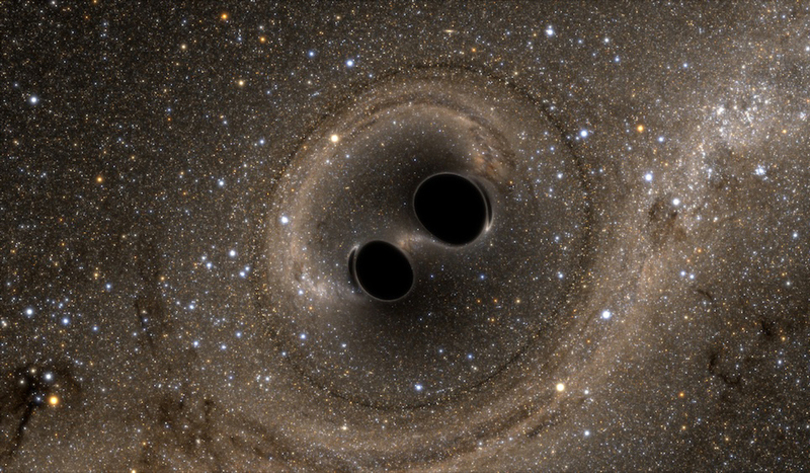Physics professors talk about recent black hole breakthrough

Courtesy of Caltech Media Assets
Black holes can be identified by looking at the bodies, such as gas or stars, orbiting around them.
This past week, evidence of a new, intermediate mass black hole was found in the Milky Way.
If the evidence points in the direction of being an intermediate mass black hole, this could serve as an important window into how supermassive black holes are formed and how they get so big.
Stefan Ballmer, associate professor of physics at Syracuse University, and Duncan Brown, professor of physics at SU explain why this discovery was so significant, and what it means for future space research.
The Daily Orange: To start, what are black holes and how are they formed?
Stefan Ballmer: We know that small black holes are formed at the end of stellar evolutions. If a heavy star burns out its nuclear fuel, there is essentially nothing left to support the star’s structure and it just collapses into a black hole. The question becomes how do you form heavier black holes?
One tantalizing hint to this story comes from the likely discovery. We’ve observed that the black holes of several solar masses can actually merge and form heavier black holes, and so that’s one possible path. In fact, we’ve known now for a while that at the center of every galaxy there is a supermassive black hole. The mass of that black hole seems to track the number of stars of the galaxy, the size of the galaxy essentially.
Nobody really knows how they form, so that’s a strong hint that there might be sort of a small to big merging cycle — that smaller black holes form first, then intermediate black holes, then as the galaxies of all those smaller galaxies surround it, that they end up merging and forming a bigger black hole in the center.
If this really is a missing link, the way to prove this is to look for gravitational waves, which is the only thing these things send out as they start forming heavier and heavier black holes.
The D.O.: Why was this particular recent discovery considered so important to space research?
Duncan Brown: It’s the first observation of a black hole that lives in this so-called intermediate mass regime. You can infer the existence of a black hole by observing the behavior of the objects moving around it.
In the latest observation, what they’ve seen is a cloud of gas moving around in a way that suggests that there is a 100,000 solar mass black hole in that cloud of gas. This is certainly the strongest evidence we have so far, but it’s not the same as seeing two black holes collide into each other and the gravitational waves they emit.
S.B.: People have speculated about the existence of these intermediate black holes and until now, only a few of these were known. The fact that we can now locate them in our Milky Way is important.
The D.O.: What equipment is used to find these black holes and how are they identified?
S.B.: With a black hole you can somehow infer its gravitational pull by observing gas or stars that are orbiting it. If you conclude that there must be a certain mass because you see something orbiting that area, and you can observe that gas moving relatively close in, you can estimate how big this area of heavy mass can be.
Once you convince yourself there’s lots of mass in a tiny area, that’s sort of the smoking gun that there’s a black hole, if you do it with optical astronomy. Gravitational waves have a unique feature in that you can only observe mergers of two black holes, but you see the signal when they literally ram into each other, so there’s no doubt what you’re observing.
The D.O.: What does this discovery mean for future space research?
S.B.: The LISA (Laser Interferometer Space Antenna, a gravitational wave detector consisting of three separate spacecrafts which each operate millions of miles from each other), which is supposed to fly in about 10 years, will be sensitive to anything that would involve intermediate black holes merging. If this really is a missing link, we will know for sure when LISA flies.
The D.O.: What are the chances that a black hole would occur close enough to our solar system to see any effects?
D.B.: The chances of there being a black hole close enough to our solar system to cause any effect that we would notice in our everyday lives are vanishingly small. There’s a lot of empty space between our solar system and objects in the Milky Way.
And a popular misconception about black holes is that they suck things into them. They are basically manifestations of pure gravity. A black hole has basically the same effect as a real object of the same mass. You can fall into a black hole like you can fall down to the surface of the earth, but you can’t get sucked into it.
Even if there was a 10 solar mass black hole just outside our solar system, you would perceive it because it would change the orbits of the planets because there would be this other massive object, but we wouldn’t get sucked into the black hole or anything.




